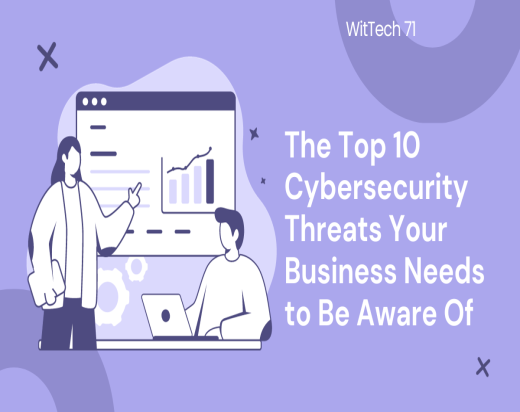The Top 10 Cybersecurity Threats Your Business Needs to Be Aware Of
In an era where businesses are more reliant on digital technology than ever before, the importance of cybersecurity cannot be overstated. Cyber threats are constantly evolving, becoming more sophisticated and potentially devastating. As businesses increasingly rely on digital operations, understanding and mitigating these threats becomes a paramount concern. In this article, we will explore the top 10 cybersecurity threats that your business should watch out for in 2023 and beyond.
1. Phishing Attacks
Phishing remains a pervasive threat, with attackers using increasingly convincing methods to deceive users. Phishing attacks often involve fraudulent emails or websites that appear to be from trusted sources, tricking individuals into revealing sensitive information such as login credentials or financial data. To counter this threat, businesses should invest in employee training and employ email filtering systems to detect and block phishing attempts.
2. Ransomware
Ransomware attacks are on the rise, and they can cripple businesses by encrypting critical data until a ransom is paid. In some cases, even paying the ransom does not guarantee data recovery. Businesses should maintain up-to-date backups, implement robust endpoint security, and regularly update their software to prevent falling victim to ransomware attacks.
3. Insider Threats
Insider threats can be just as damaging as external ones. Malicious or negligent employees can compromise security, intentionally or unintentionally. Implement strict access controls and monitoring to detect and prevent insider threats. Educating employees about the importance of security and data protection is also crucial.
4. Distributed Denial of Service (DDoS) Attacks
DDoS attacks disrupt online services by overwhelming a website or network with an excessive volume of traffic. They can result in downtime, financial losses, and damage to a business's reputation. Investing in DDoS mitigation services and ensuring network redundancy can help safeguard against these attacks.
5. Zero-Day Vulnerabilities
Zero-day vulnerabilities are software vulnerabilities unknown to the software vendor and, therefore, without available patches. Cybercriminals often exploit these vulnerabilities before they are fixed. To mitigate this threat, businesses must stay informed about security updates and use intrusion detection systems to spot potential zero-day attacks.
6. Internet of Things (IoT) Vulnerabilities
As IoT devices become more prevalent in business environments, so do their security risks. Many IoT devices lack adequate security features, making them vulnerable to exploitation. Businesses should segment their IoT networks from critical systems, change default passwords, and regularly update IoT device firmware.
7. Supply Chain Attacks
Attackers may compromise a business's supply chain to infiltrate the target organization. This can be through third-party software, hardware, or even personnel. Vigilant vetting and security assessments of supply chain partners can reduce this risk.
8. Credential Stuffing
Credential stuffing attacks involve cybercriminals using stolen usernames and passwords from one website on various other sites where the same credentials may be used. To defend against this, businesses should encourage users to use unique, strong passwords and employ multi-factor authentication (MFA) wherever possible.
9. Malware
Malware comes in many forms, from viruses to Trojans, and it remains a significant threat. Regularly updated antivirus software, strong network security, and employee education are essential defenses against malware.
10. Social Engineering
Social engineering involves manipulating people into divulging confidential information. This could be via phone, email, or in-person. Human error is often a weak link in security. Comprehensive training programs can help employees recognize and resist social engineering attempts.
Conclusion
Cybersecurity threats are continually evolving, making it essential for businesses to stay vigilant and proactive in their efforts to protect sensitive data and operations. By understanding and addressing the top 10 cybersecurity threats outlined in this article, organizations can reduce their risk exposure and build a robust defense against the ever-present and increasingly sophisticated world of cyber threats. While no system can be entirely foolproof, a combination of proactive security measures, employee education, and a commitment to staying informed about emerging threats can significantly enhance a business's cybersecurity posture in an ever-changing digital landscape.





Comments
With thanks. Ample advice. webpage You've made your point! casino en ligne Cheers! Ample material! casino en ligne Truly loads of valuable information! casino en ligne Terrific write ups, Appreciate it. casino en ligne Many thanks. Fantastic information! casino en ligne With thanks, An abundance of write ups. casino en ligne Truly lots of useful advice. casino en ligne Fantastic posts, Cheers. casino en ligne Very good forum posts Thank you! casino en ligne
2025-05-31 03:54:06